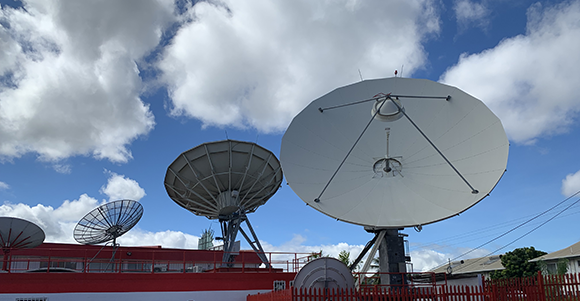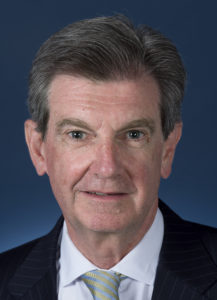The A$2 billion Australian Infrastructure Financing Facility for the Pacific aims to significantly boost Australia’s support for commercial infrastructure development in Papua New Guinea and Timor‑Leste. David James takes a closer look.

These loans will be directed at commercial infrastructure—telecommunications, transport, airports and ports, energy. Credit: BAI
The Australian government has made operational the A$2 billion (K4.7 billion), Australia Infrastructure Financing Facility for the Pacific (AIFFP). It will provide both grants and debt capital to Papua New Guinea and Timor-Leste.
According to Bruce Davis, Australia’s High Commissioner to Papua New Guinea, the AIFFP for the Pacific will provide new forms of capital to PNG.
‘A critical component of economic growth is access to high quality and sustainable financing,’ he told a Port Moresby conference.
‘[The AIFFP] will significantly boost support for infrastructure development through access to additional finance.’
Davis said foreign investment helps brings more economic growth.
‘At the heart of our bilateral relationship is a strong economic partnership. Australian investment in Papua New Guinea has helped drive and diversify the PNG economy.’
Debt and grants
Business Advantage PNG understands that A$1.5 billion (K3.5 billion) of the fund will be loans. The remaining A$500 million (K1.17 billion) will be in the form of grants with a life of four years, starting from the 2019-2020 financial year.
It is understood that the task of assessing the loans has been given to Export Finance Australia (formerly Efic, the Export Finance and Insurance Corporation).
The loans will go either to the private sector or governments and the Export Finance Australia’s (EFA) Treasury will determine the interest rates and periods.
The interest rates on private sector loans will be above the government’s base rate set by Australia’s Reserve Bank (currently 1 per cent), but below the level typically offered by the private sector in the Pacific.
‘The AIFFP’s loans may deepen PNG’s thin capital markets. But they will need to be repaid, so they will only go to projects that are considered financially sustainable.’
The interest rate on government loans will be derived from the rates set by the International Bank for Reconstruction and Development for sovereign lending in the Pacific.
It is understood the current range is between 2.7-3.2 per cent for terms up to 20 years. The longer the term of the loan, the higher the interest rate.
Over time, the AIFFP will look at extending its product offerings, including providing equity capital, guarantees and insurance.
Priorities
The AIFFP’s loans may deepen PNG’s thin capital markets. But they will need to be repaid, so they will only go to projects that are considered financially sustainable.
‘It is also hoped that the AIFFP loans will act as a catalyst to attract more inflows into the Pacific by leveraging funds from the private sector, and pension funds already active in the region.’
The priorities are thus likely to differ from previous Department of Foreign Affairs and Trade (DFTA) allocations. Historically, Australia’s aid programs in the Pacific have been targeted at social infrastructure such as roads, schools and hospitals, but the AIFFP loans will instead be directed at commercial infrastructure—telecommunications, transport, airports and ports, energy (especially low emission projects such as solar, hydro and biomass) and water utilities.
It is also hoped that the AIFFP loans will act as a catalyst to attract more inflows into the Pacific by leveraging funds from the private sector, and pension funds already active in the region.
Australia’s economic support to the Pacific in brief
According to Australia’a Department of Foreign Affairs and Trade, the country has signed 11 partnerships with the governments of PNG (March 2016), Tonga (September 2016), Samoa (December 2016), Vanuatu (December 2016), Nauru (April 2017), the Solomon Islands (June 2017), Tuvalu (March 2018), Federated States of Micronesia (June 2018), Republic of Palau (June 2018), Republic of the Marshall Islands (June 2018), and Kiribati (September 2018).
Papua New Guinea remained Australia’s largest bilateral program in 2018-19 at A$572.2 million (K1,357 billion), followed by the Solomon Islands (A$187 million [K443.6 million]), Vanuatu ($62.3 million [K147.8 million]) and Fiji (A$58.1 million [K137.8 million]).









Speak Your Mind